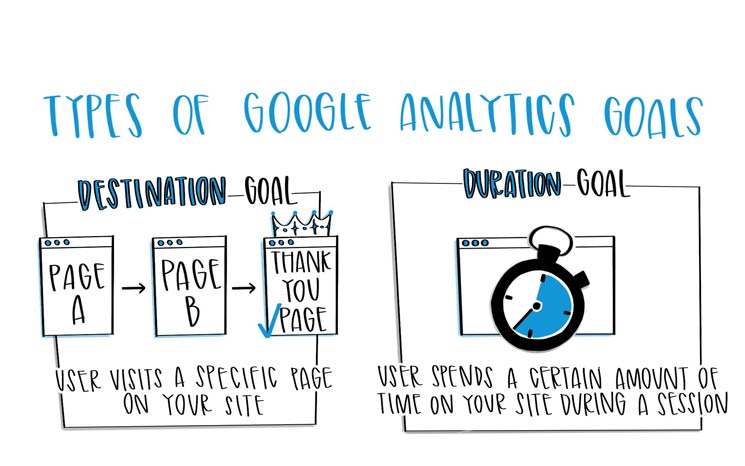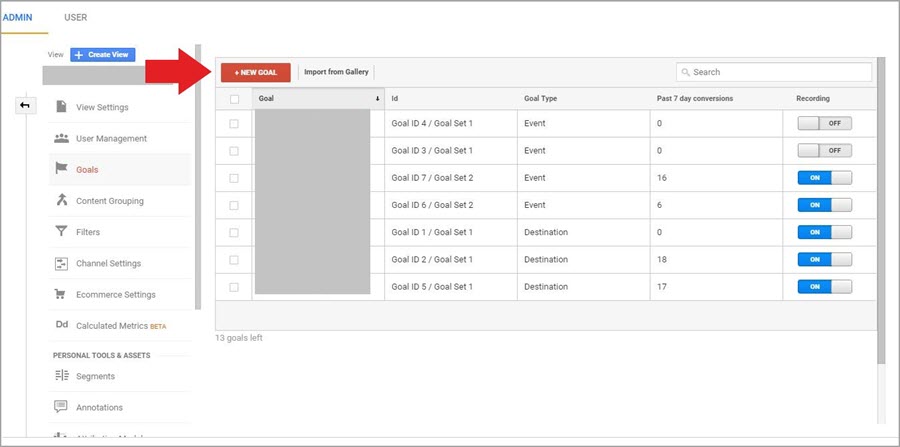What Data Is Google Analytics Goals Unable to Track: Vital Information
What Data Is Google Analytics Goals Unable to Track: Vital Information
Blog Article
Discover the Limitations of Google Analytics Goals: Introducing the Information Types That Remain Untrackable
As services increasingly count on data-driven decision-making, understanding the constraints of tools like Google Analytics ends up being critical. While Google Analytics Goals offer valuable insights right into customer interactions, there exist data kinds that avoid monitoring, positioning difficulties to a detailed understanding of user actions.
Incomplete Customer Journey Tracking
Insufficient individual journey tracking within Google Analytics can prevent the ability to precisely examine customer actions. When the customer trip is not totally tracked, there are gaps in the information that protect against an extensive understanding of exactly how users connect with an internet site. This absence of insight can lead to missed opportunities for optimization and enhancements to the customer experience.
One usual concern with incomplete individual trip monitoring is the lack of ability to see the complete course that users take in the past finishing an objective or leaving the website. Without this details, it is challenging to recognize where users might be running into challenges or friction factors that stop them from transforming. Additionally, incomplete monitoring can cover the effect of particular advertising and marketing initiatives or web site modifications on individual behavior.
To address this constraint, it is crucial to set up proper tracking mechanisms within Google Analytics to record the entire user journey. This may entail establishing event monitoring, objective funnels, or utilizing tools like Google Tag Manager to guarantee that no important communications go unrecorded. By acquiring a comprehensive sight of the customer trip, web site owners can make even more informed decisions to enhance user interaction and drive conversions.
Attribution Difficulties
Browsing with attribution obstacles in Google Analytics requires a comprehensive understanding of exactly how different touchpoints add to the overall conversion procedure. Attribution challenges arise from the intricacy of modern client trips, where users connect with multiple networks prior to transforming. Google Analytics offers numerous attribution versions like very first touch, last touch, and straight, each providing a various viewpoint on how credit scores is appointed to touchpoints along the conversion path. Nevertheless, these models may not always properly reflect real impact of each touchpoint on the conversion.
One usual acknowledgment challenge is the trouble in attributing conversions to the correct source, particularly in situations where users engage with multiple channels before transforming. Furthermore, cross-device tracking positions one more acknowledgment obstacle, as users frequently switch in between devices throughout their journey, making it testing to track their interactions effortlessly.
Offline Conversions
Offered the challenges related to associating conversions accurately in online networks, the dimension of offline conversions provides a substantial chance for marketing experts looking for a more thorough understanding of their clients' journey. Offline conversions refer to actions that customers take in the physical world, such as making acquisitions in brick-and-mortar stores or over the phone, going to occasions, or engaging with printed products - what data is google analytics goals unable to track. These conversions are critical for services web that run both online and offline, as they provide valuable insights into the performance of advertising projects across numerous touchpoints
Tracking offline conversions typically presented a substantial difficulty for online marketers, as it was testing to link these actions back to specific on the internet interactions precisely. With advancements in technology, such as the assimilation of CRM systems, unique identifiers, and promo code codes, organizations can now connect the space in between online and offline information to get an extra holistic view of client habits. By properly gauging offline conversions, online marketers can optimize their techniques, designate sources a lot more effectively, and eventually boost the overall customer experience.
Cross-Device Tracking
Cross-device tracking plays an important function in comprehending the interconnected nature of customers' digital interactions across multiple tools. In today's omnichannel world, where customers effortlessly switch over in between smart devices, desktop computers, and tablet computers, tracking their actions a fantastic read throughout these gadgets is essential for online marketers to gain an extensive sight of their client journey.

In addition, privacy problems and regulations such as GDPR and CCPA have additionally challenging cross-device tracking. With individuals demanding even more control over their information and raised constraints on monitoring modern technologies, online marketers need to find privacy-compliant and ingenious methods to link individual communications throughout gadgets.
Dynamic Material Interaction
Comprehending individual interaction with dynamic material is critical in maximizing electronic marketing strategies for improved audience communication. Dynamic web content describes internet site components that transform based upon customer actions, choices, or various other variables, supplying a tailored experience. Nevertheless, tracking individual interactions with dynamic content poses obstacles for traditional analytics tools like Google Analytics.
While Google Analytics can track standard communications like clicks and page sights, it might struggle to record even more nuanced involvements within dynamic material. what data is google analytics goals unable to track. Metrics such as time invested in particular vibrant elements, hover actions, or communications within pop-ups are often not conveniently quantifiable utilizing typical monitoring techniques. This restriction hinders marketing professionals' capability to fully realize exactly how users are involving with dynamic web content and customize their approaches as necessary

Final Thought
Finally, Google Analytics objectives have restrictions in tracking insufficient customer trips, connecting conversions precisely, catching offline conversions, tracking cross-device interactions, and measuring vibrant web content engagement. These constraints highlight the More Info significance of checking out extra monitoring techniques and devices to obtain a more extensive understanding of individual behavior and conversions beyond what Google Analytics can give.
While Google Analytics Goals deal valuable insights right into customer communications, there exist information kinds that thwart monitoring, posing challenges to a thorough understanding of customer behavior.Incomplete individual trip monitoring within Google Analytics can prevent the ability to precisely examine individual behavior. When the user journey is not totally tracked, there are voids in the information that protect against a thorough understanding of just how customers communicate with a website.One common issue with incomplete individual trip monitoring is the lack of ability to see the full path that individuals take before finishing an objective or leaving the website. By gaining an extensive view of the user trip, web site proprietors can make even more informed choices to improve user involvement and drive conversions.
Report this page